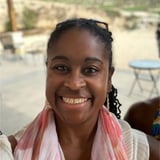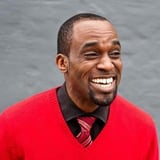Summary
In this session, Adam explains that at his company, all 1,500 designers are unified under the 'designer' umbrella instead of strict UX or front-end distinctions, spanning roles from product design to branding and client services. The panelists, including Ian, emphasize hiring designers who can clearly articulate their process, problem statements, and outcomes rather than jumping straight to solutions. They share best interview questions focusing on process, user understanding, and business impact. The conversation moves to managing globally distributed teams, with one panelist highlighting creative asynchronous collaboration using prototypes and commenting tools across time zones. Adam stresses the importance of 'triangulation' to read between communication lines and understand cultural differences, especially with more reserved team members. Ian discusses the fluidity and challenges of design titles, calling title debates distracting and arguing that behavior, delivery, and communication matter more than taxonomy. On career coaching, panelists advise honest, personal feedback combined with actionable next steps, particularly essential for junior designers. Finally, Karen urges design leaders to invest deeply in team management skills to handle complexity and deliver impact.
Key Insights
-
•
Adam’s company unifies all types of designers under a single 'designer' title rather than separating UX, visual, or industrial designers.
-
•
Effective interview questions focus on designers’ problem framing, user understanding, process choices, and measurable outcomes rather than just final solutions.
-
•
Managing remote, globally distributed design teams requires creative asynchronous collaboration tools and overlapping working hours to maintain team cohesion.
-
•
Cultural differences can make honest communication challenging; managers rely on triangulation of information to get a true sense of team morale.
-
•
Strong regional players with negotiation and influence skills are crucial in global distributed teams to balance local and global priorities.
-
•
Title granularity in design teams often distracts from actual work; what matters most is behavior, communication, and delivery rather than taxonomy.
-
•
A well-articulated story behind design work helps align distributed teams and promotes message consistency across a global organization.
-
•
One-on-one conversations yield far more honest, useful feedback than written 360 reviews or impersonal surveys.
-
•
Designers crave actionable development advice that pairs critique with specific next steps to improve their skills.
-
•
Good design management requires investing heavily in leadership skills to navigate the increasing complexity in business and teams.
Notable Quotes
"We don’t call them UX designers or front-end designers or visual designers. They’re all just designers."
"Can you show me your thought process? That’s really critical as the ability to articulate themselves."
"A really good designer tells me about the user, the problem, business and tech constraints before jumping to solution."
"In remote teams, we get prototypes up in front of folks in a short time window for collaborative comments."
"Triangulation is your friend when managing people from different cultures and reserved personalities."
"If you’re spending more time talking about titles, you’re not actually doing the design work."
"Just follow your heart and what makes you happy rather than the traditional career ceilings."
"The only thing that makes a title change is how you behave and deliver in the room."
"One-on-one conversations capture body language and tone you just don’t get in written reviews."
"Don’t be cool, be good. Work hard at leading and managing your teams."
Or choose a question:
















More Videos

"Culture cannot be outsourced; leadership needs to own the journey and trust the process."
Steve ChaparroBringing Into Alignment Brand, Culture and Space
August 13, 2020

"When I announced the project shutdown, a flood of employee emails stopped it—it had become part of the fabric."
Elizabeth ChurchillExploring Cadence: You, Your Team, and Your Enterprise
June 8, 2017

"Participation or user research draws from ideas rooted in agency and control, not just optimizing our work product."
Sha HwangThe First Fifty Years of Civic Design
November 16, 2022

"This is a moment to rethink identity beyond UX and get creative with income streams and career paths."
Corey Nelson Amy SanteeLayoffs
November 15, 2022

"Skills are modular tasks that bots can perform, triggered by specific commands or inputs."
Noz UrbinaRapid AI-powered UX (RAUX): A framework for empowering human designers
May 1, 2025

"Onboarding a new customer well bridges silos between acquisition and maintenance and produces enormous monetary rewards."
Lavrans Løvlie Ben ReasonAsk me anything – Authors of Service Design: From Insight to Implementation
November 19, 2025

"Design roles are blurring or dead; super senior individual contributor roles are emerging as a new career path."
Peter MerholzThe 2025 State of UX/Design Organizational Health
November 12, 2025

"The Shakers’ principled approach to design was a precursor to Bauhaus’s form follows function and today’s user-centered values."
Daniel GloydWarming the User Experience: Lessons from America's first and most radical human-centered designers
May 9, 2024

"There’s always money for software, not for people."
Louis RosenfeldCoffee with Lou
January 11, 2024



















